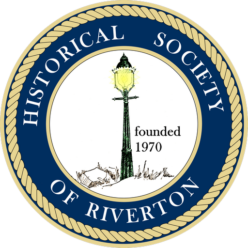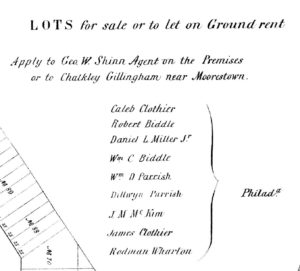
Regular visitors and certainly, members of this Historical Society, will recall former Town Historian Mrs. Betty B. Hahle’s now familiar explanation that a group of Philadelphia merchants seeking a place to build their summer homes away from the City’s problems, yet close enough to commute to their Center City places of business, founded Riverton in 1851.
Whether that number of investors was 10, or 7, or 9 is a matter of some uncertainty that Roger Prichard will undertake at a later date. Even the names change, depending on what map, document, or newspaper clipping one references.
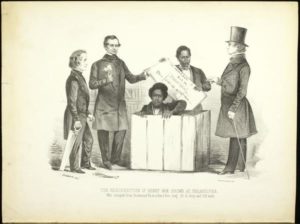
But did you know that two of the oft mentioned investment partners, James Miller McKim and Professor Charles D.Cleveland, were also part of the remarkable and inspiring story of how Henry “Box” Brown, who was born enslaved on a Virginia plantation, mailed himself to freedom in 1849?
Both were right there unpacking Brown’s shipping crate when he arrived at 5th and Arch in Philadelphia. This was less than two years before they helped found Riverton.
Although the anti-slavery lithograph above depicts the climax of an audacious story that may be familiar to many today, some abolitionists of the era feared that publicity would only make it harder for other slaves to adopt a similar scheme with which to emancipate themselves.
The Library Company of Philadelphia’s website describes the above lithograph thus:
Antislavery print celebrating the moment fugitive slave Henry Box Brown emerged from his crate in Philadelphia. Brown, with the assistance of the Vigilance Committee of the Pennsylvania Anti-Slavery Society, escaped slavery by having himself shipped to Philadelphia where he emerged in the presence of abolitionists C.D. Cleveland, J. Miller M’Kim, William Still, and Lewis Thompson. Depicts Brown just emerging from his box with Still holding the crate’s lid labeled, “Wm. Johnson, Arch St. Philadelphia, This side up with Care;” Cleveland with a saw in his right hand; M’Kim with a hatchet in one hand and using his other hand to help Still hold the lid; and Thompson pointing to Brown with his right hand as he holds in his free hand a walking stick.
Mr. Brown adopted the moniker “Box” for obvious reasons and wrote a book, The Narrative of Henry Box Brown. He went on to became an abolitionist speaker and performer, touring the US, Canada, and England. His heroic escape from bondage has been the subject of many books, television shows, and newspaper, magazine, and web articles.
His bold escape was so popular that this lithograph was printed and sold to the public. And look – the two men on the left are our Charles Cleveland and J. Miller McKim!
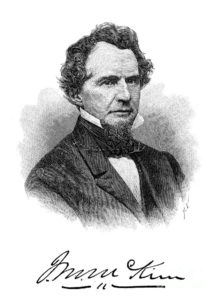
In 2010, the New York Times featured one such article, “When Special Delivery Meant Deliverance for a Fugitive Slave,” that vividly details how Brown escaped and it features an eyewitness account written by the very man who accepted delivery of the precious cargo in Philadelphia – James Miller McKim.
The very same J. Miller McKim and Charles Cleveland who unpacked the exhausted but exhilarated Henry Brown from his crate would, within two years, be part of the establishment of Riverton in 1851.
Both men were key figures in the anti-slavery community, James Miller McKim served as lecturer, organizer, and corresponding secretary for the Pennsylvania Anti-Slavery Society, and Professor Charles Dexter Cleveland courageously assisted fugitive slaves by operating as an “agent,” or coordinator, who plotted courses of escape and made contacts to help them connect to the Underground Railroad.
Famous African-American abolitionist William Still devoted over nine pages of his 1871 book, The Underground Railroad, to the work of James Miller McKim (pgs. 654-659), another ten pages to Charles D. Cleveland (pgs. 723-734), and six pages (pgs. 81-86) on his account of the deliverance of Henry Box Brown.
For the ways that these gentlemen connected to Riverton, we turn to the research conducted by Mrs. Betty B. Hahle who often wrote of Riverton’s founders in her signature “Yesterday” columns in the Gaslight News and temper it with a bit of our current understanding. Gaining access to Betty’s original research notes may well clear up discrepancies.
This is a detail of the earliest known map to exist of Riverton, undated, but consistent with where things stood before the end of 1851.
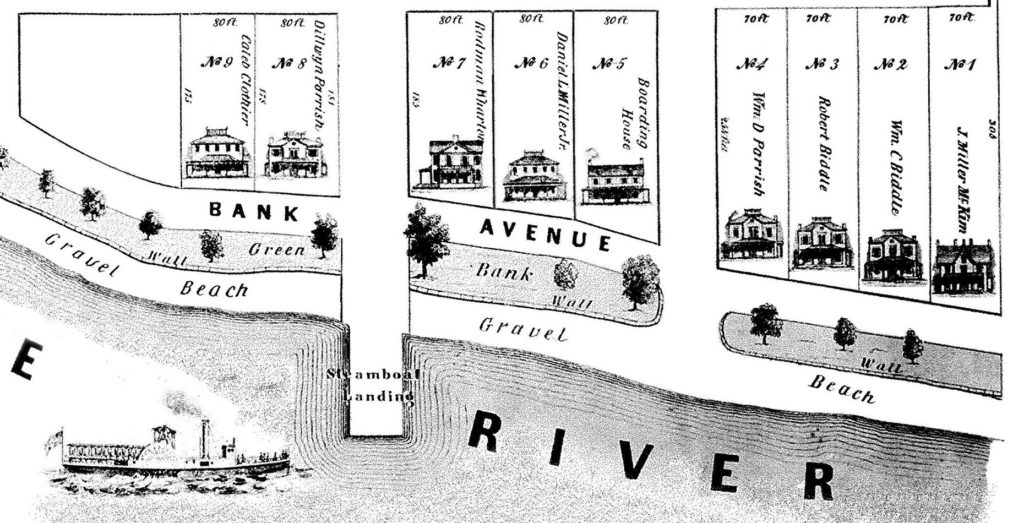
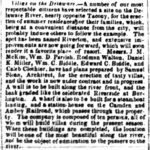
On this map, J. Miller McKim’s name appears on the house at the far right. It still exists today, beautifully restored, at 102 Penn Street, after a move in the 1940s.
An April 9, 1851 newspaper article in the Philadelphia Public Ledger also counts him as one of a number of “our most respected citizens” who “…have had plans prepared by Samuel Sloan, Architect, for tasty villas, and the work is now under contract and in progress.”
Tasty, indeed.
However, he never technically owned that house in Riverton. Prof. Charles D. Cleveland took over McKim’s interest before January of 1852. Fellow HSR Board Member Roger Prichard surmises that perhaps the other founders chose to include the esteemed abolitionist for the cachet of prestige that his name might convey to the group’s capitalist venture.

Author and schoolmaster Prof. Charles D. Cleveland headed a girls’ school called the School for Young Ladies at 903 Clinton Street in Philadelphia, a house that stands today. It wasn’t far from the business establishments of the other Riverton founders. Betty Hahle wrote that he served as director and officer of the Riverton Improvement Company.
So, now you know.
– John McCormick and Roger Prichard
